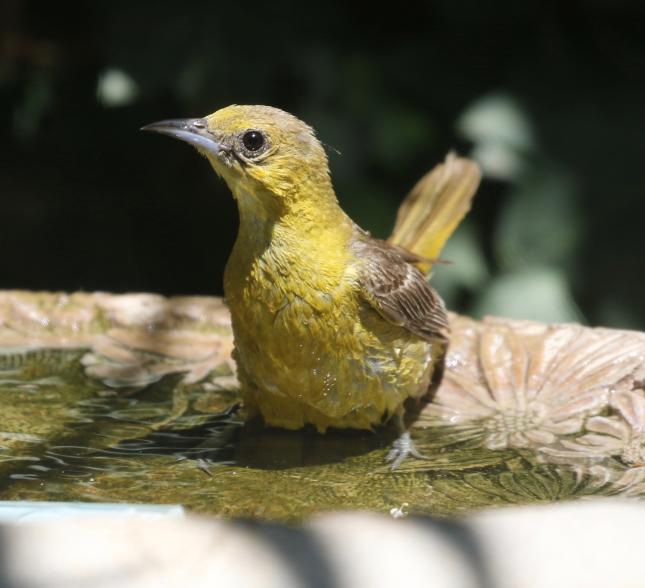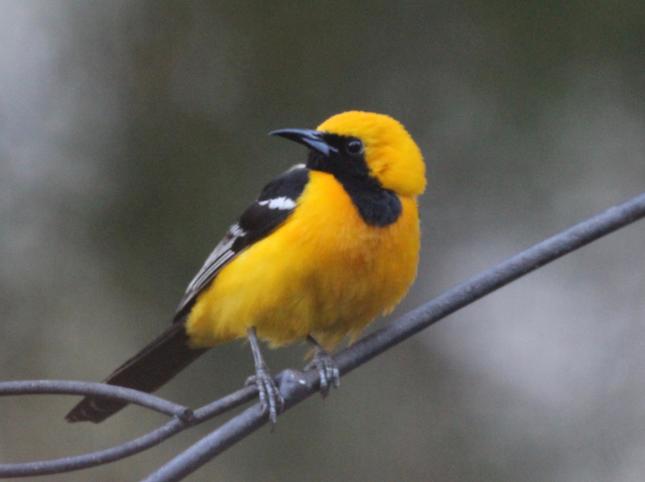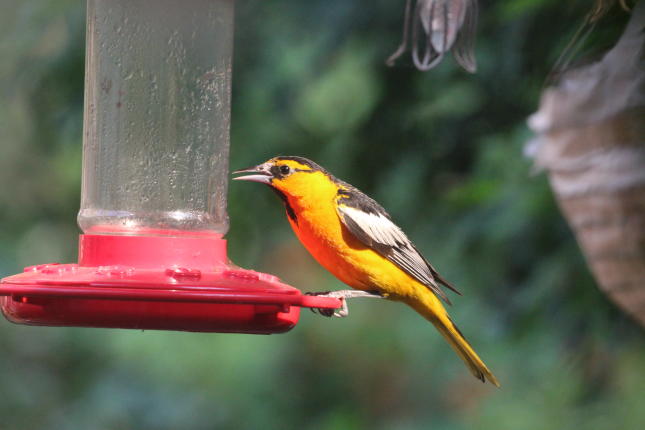Fun Facts About Orioles
 Orioles will lay 4-5 eggs anywhere from April to June. The young will fledge as late as 30 days from egg laying.
Orioles will lay 4-5 eggs anywhere from April to June. The young will fledge as late as 30 days from egg laying.- Orioles are found across North America in the summer. Some species winter in the tropics and others in Mexico.
- Orioles are insect and fruit eaters. They usually stay hidden in the trees eating and singing their beautiful whistling notes. They can be drawn down from their perches with foods like orange slices, grape jelly, mealworms and nectar feeders.
- When not feeding on nectar, orioles seek out caterpillars, fruits, insects, and spiders.
- While modern day Oriole nests are made primarily of plant fibers, Oriole nests collected in the late 1800s, before the age of the automobile, were made almost exclusively of horsehair.
- The Oriole nest is an engineering masterpiece. They weave a hanging-basket nest with plant fibers, grasses, vine and tree bark and sometimes string or yarn placed out on the small twigs of a branch 6-45 feet in the air. This keeps them safe from most predators.
- Orioles are members of the blackbird family (Icteridae), along with meadowlarks and cowbirds. Birds in this family all have super strong, long, and pointed bills. They use these bills to get at food other birds can’t reach, such as prying apart thick patches of grass, opening up flowers, enlarging holes in tree bark, and digging into ripe fruits for their juice.
Hooded Oriole
- Hooded Oriole song is a chattering mix of notes and cries that sometimes inclu
 des a few notes from their neighbors. In Arizona, they mimic Gila Woodpeckers and Ash-throated Flycatchers.
des a few notes from their neighbors. In Arizona, they mimic Gila Woodpeckers and Ash-throated Flycatchers. - Hooded Orioles in California earned the nickname “palm-leaf oriole” because of their tendency to build nests in palm trees. When the nest is suspended from palm leaves, the female pokes holes in the leaf from below and pushes the fibers through, effectively sewing the nest to the leaf.
- A few Hooded Orioles in southern California and Arizona hang around neighborhoods all winter long, taking advantage of free food at hummingbird feeders instead of migrating south.
- Hooded Orioles expanded their range northward after people planted more ornamental palm trees around their homes and suburban areas. By 2017, Hooded Orioles were using parks and suburban yards as far north as Arcata, California.
- Don't be fooled by color, Hooded Orioles in Texas and eastern Mexico areflame orange, but those in the southwestern United States and western Mexico are bright yellow.
- The oldest recorded Hooded Oriole was a male, and at least 6 years old when he was found in California in 1972, the same state where he had been banded in 1967.
Bullock's Oriole
- Bullock’s Orioles may feed almost entirely on grasshoppers when they are plentiful, one bird was found to have feasted on 45 of them in one day.
- The female Bullock’s Oriole is the primary nest weaver, but she may get some help from her mate in both the weaving and collection of nest material. Only the female incubates and broods, both feed the young.
- Most Bullock’s Orioles spend their winters in central and southern Mexico, with a few staying along the coast of southern California.
- The Bullock’s Oriole was named in honor of William Bullock and his son, also named William, for their ornithological work in Mexico in the early 1800s.
- The oldest banded Bullock’s Oriole ever recaptured in the wild had lived 6 years and 1 month.
Hooded and Bullock's Orioles can be seen in the Conejo Valley in spring and summer.
Read more about Orioles at https://www.allaboutbirds.org/guide


